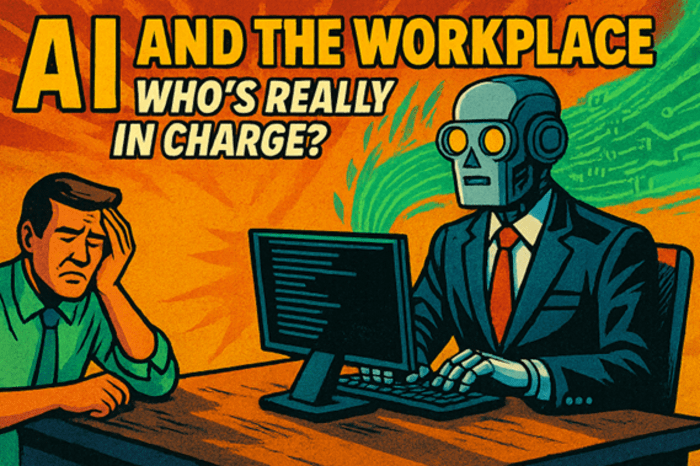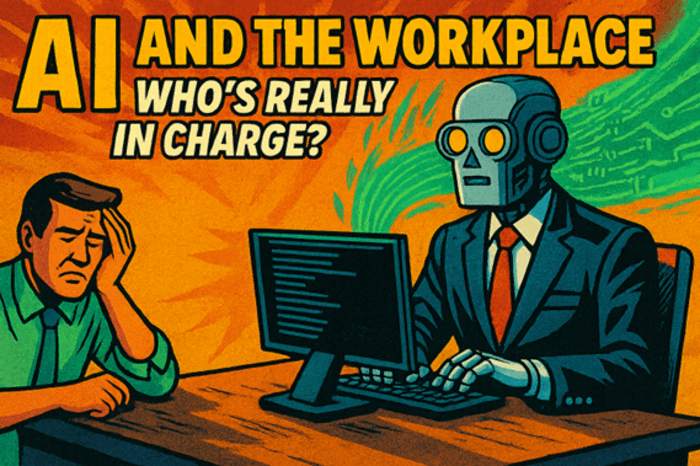
ORLANDO, Fla. – “AI won’t replace managers – managers who use AI will replace managers who don’t.”
This quote from an article from the Silicon Valley Innovation Center blog has been making the rounds in tech and business circles. And while it’s not Shakespeare, it does set the table for where we are today.
Recommended Videos
Years ago, when I was teaching writing at the University of Tampa, I’d tell my students not to open with a quote unless it was either truly profound or completely fresh. This one might not check either box, but in this place and time, it hits close to home.
Across industries all over the world, artificial intelligence (AI) isn’t just automating tasks – it’s stepping into the boss’s office, setting up shop, and settling in for the long haul. In a workplace shift that’s quietly evolved over the years, AI is climbing the corporate ladder, assuming responsibilities and decision-making once reserved exclusively for humans.
[EXCLUSIVE: Become a News 6 Insider (it’s FREE) | PINIT! Share your photos]
At JPMorgan Chase & Co., financial analysts use AI tools to process and interpret vast volumes of documents, freeing up time for high-level strategy. At Google, AI assistants coordinate meetings and allocate resources so efficiently that human intervention is often only needed for the unexpected. In logistics, major retailers rely on forecasting AI tools to analyze shipping data and even suggest contingency plans when weather threatens supply chains or consumer demand unexpectedly shifts.
Though AI may feel new and untested, the possibility that it could reshape the workplace has long been on the radar of global business leaders.
Seven years ago, Google CEO Sundar Pichai said AI is more important than fire or electricity. JPMorgan Chase & Co CEO Jamie Dimon compared AI to the printing press and the steam engine. Elon Musk once said AI is more dangerous than North Korea and a fundamental risk to the existence of human civilization. Musk added: “AI is a rare case where I think we need to be proactive in regulation than be reactive.”
And just last year, Sam Altman, the CEO of OpenAI (the folks behind ChatGPT) said that people should be happy that we are a little bit scared of this.
Okay then.
In March of 2025, Altman said ChatGPT had reached 500 million weekly users. By August, that number was up by 20% to 700 million weekly users. Earlier this month, ChatGPT hit 800 million weekly users, an astonishing number for a product that is less than three years old (ChatGPT launched in Nov. of 2022; OpenAI was founded as a nonprofit in 2015 and reorganized with a for-profit arm in 2019). OpenAI’s for-profit subsidiary is now estimated to be valued at about $500 billion.
A recent report from the Stanford Institute for Human-Centered AI revealed that global corporate AI investment had reached $252.3 billion in 2024. Of that, the U.S. accounted for was $109.1 billion, close to half of the world investment, 12 times more than China ($9.3 billion) and 24 times more than the UK ($4.5 billion). The same report noted that 78% of the corporations surveyed were using AI in 2024, up from 55% in 2023.
So, with all the hype, investment, excitement, and promises of cost savings and efficiency, are there significant results for companies bringing AI into the fold, or are corporate leaders throwing away money and disrupting workflows as anticipated results come up short?
The answer likely lies somewhere in between as AI is both saving and costing companies large sums of money, often at the same time. JPMorgan Chase CEO Jamie Dimon said his company spends about $2 billion a year on developing AI technology and about breaks even on savings. Dimon also mentioned his bank now employs thousands of staff focused on AI development.
Proponents of AI tout the benefits of the technology taking on mundane, time-consuming, or repetitive manual tasks, freeing up workers to concentrate on more important duties. AI can process large datasets without getting tired or bored. AI can work continually around the clock. AI doesn’t call in sick, doesn’t need vacation days, and doesn’t need a suite of benefits, health insurance, or a 401k.
But in as many areas as AI shines, it also fails. Enthusiasts in Silicon Valley were touting 2025 as the year of AI agents, software that could complete human-level tasking all on its own. But as we close in on 2026, the promise of a room full of AI servers running a company’s day-to-day operations is more fantasy than reality. How do we know – Carnegie Mellon tried it, setting up a fake software company staffed with nothing but AI Agents that failed spectacularly at accomplishing daily tasks.
In general, AI performs well on data-driven, repetitive, and objective tasks, but struggles where critical thinking, social dynamics, empathy, and complex judgment are needed. Enthusiastic bosses have replaced workers with AI, only to later find out the technology is inconsistent and inflexible and can be easily pushed to its limit.
That said, not everything is doom and gloom.
A growing number of companies are experimenting with combining the best of both worlds with AI-Augmented Management or Human-in-the-Loop AI Managers now rely on smart systems to recommend training, flag disengagement risk, and uncover productivity trends. Workers can use AI to boost productivity and at the same time keep the technology in check (ideally without being replaced).
One last thing: AI is popping up in an unexpected frontier, employee evaluations (but even here, the power of the algorithm cuts both ways). Some employees report a sense of increased fairness and efficiency in AI-led reviews because it reduces bias, while others lament the loss of human compassion and emotion in job evaluations. AI doesn’t just have the capability to replace humans; in some cases, it can also eliminate human compassion.
Lesson learned.
Get breaking news alerts delivered to your inbox.
https://www.clickorlando.com/news/local/2025/10/16/dollars-sense-your-next-boss-might-be-a-bot/

